Rohwer
Location: McGehee, Ark.
Peak population: 8,475
Date opened: September 18, 1942
Date closed: November 30, 1945
Rohwer held people from Los Angeles and San Joaquin County, California. To arrive at camp, the incarcerees endured a three-day train ride to Arkansas.
Rohwer was located at 140 feet of elevation in Desha County in southeastern Arkansas, 110 miles southeast of Little Rock and 11 miles north of McGehee. Its 10,161 acres of wooded swampland were in an impoverished area 27 miles north of the Jerome concentration camp; the Mississippi River was 5 miles to the east. Summers were hot and humid, with chiggers and mosquitoes adding to the inmates’ discomfort. Rohwer had severe drainage problems and about half of the site was under swampy water during spring.
The swampy land used for Rohwer was purchased by the Farm Security Administration during the 1930s from farm owners who were unable to pay their taxes. The area was abandoned until 1942 when the War Relocation Authority took it over. Rohwer was the second to the last camp to close, on November 30, 1945.
For more info about Rohwer, click here.
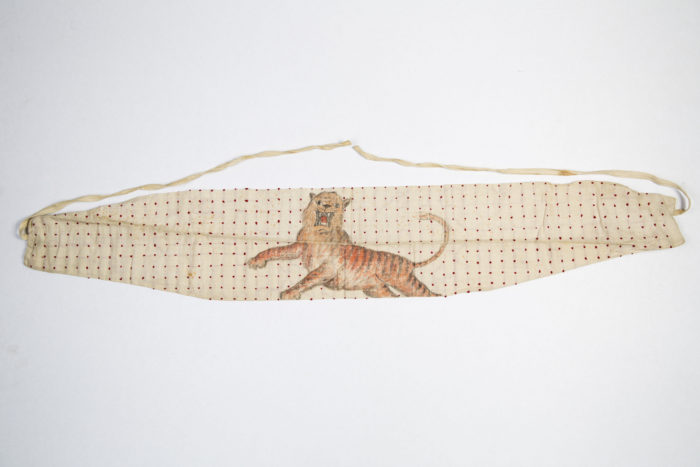
Japanese American National Museum, Gift of Susumu Ito (94.306.2)
Click to open full-size image in new tab.This object is part of the story A Soldier's Treasure, which is about Identity.
This object is called a senninbari.
- How would you describe the senninbari?
- What materials is it made of?
- Why do you think there is a tiger depicted on it?
- What else do you notice?
- What might it have been used for?
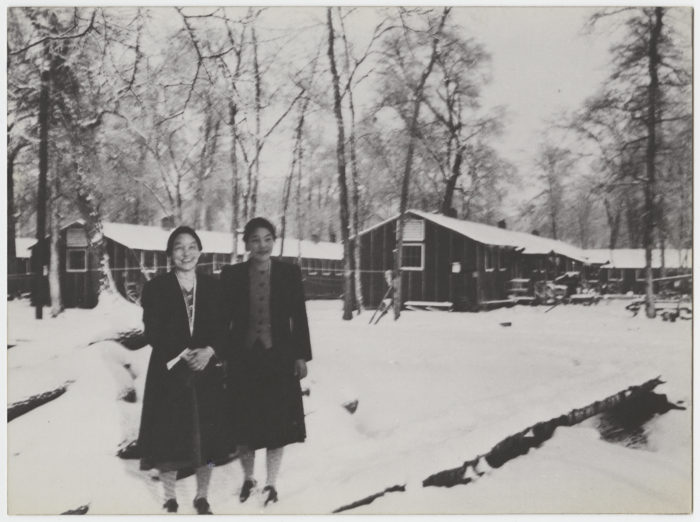
Japanese American National Museum, Gift of Susumu Ito (94.306)
Click to open full-size image in new tab.This object is part of the story A Soldier's Treasure, which is about Identity.
Born in California in 1919 to a family of immigrant tenant farmers, Sus Ito was drafted into the US Army in February 1941. After the bombing of Pearl Harbor, he was switched to civilian duty while his family was sent to live at Rohwer concentration camp in Arkansas. In the spring of 1943, he was selected to join the 442nd Regimental Combat Team (RCT), 522nd Field Artillery Battalion. Ito went on to serve in all of the 442nd’s campaigns in Italy, France, and Germany, eventually rising to the rank of lieutenant. His tour of duty included high-profile historical events such as the rescue of the Lost Battalion and the liberation of a subcamp of Dachau.
During his time in Europe, Ito kept three things with him: a small Bible, a senninbari (Japanese 1000-stitch cloth belt traditionally given to soldiers who are going to war) made by his mother at Rohwer, and a 35mm Agfa camera. He took thousands of photographs documenting his life in the military and went to great lengths to preserve the negatives, even having some of them developed at villages he was stationed at along the way. Ito’s vast archive of images taken while on duty during World War II gives a rare and breathtaking look at daily life within the 522nd Field Artillery Battalion of the celebrated all-Japanese American 442nd RCT.
Susumu Ito video interview (July 8, 2015), Japanese American National Museum
Click to open full-size image in new tab.This object is part of the story A Soldier's Treasure, which is about Identity.
In this video clip, Dr. Ito says he didn’t wear his senninbari or show it to his fellow soldiers.
- Why do you think this is?
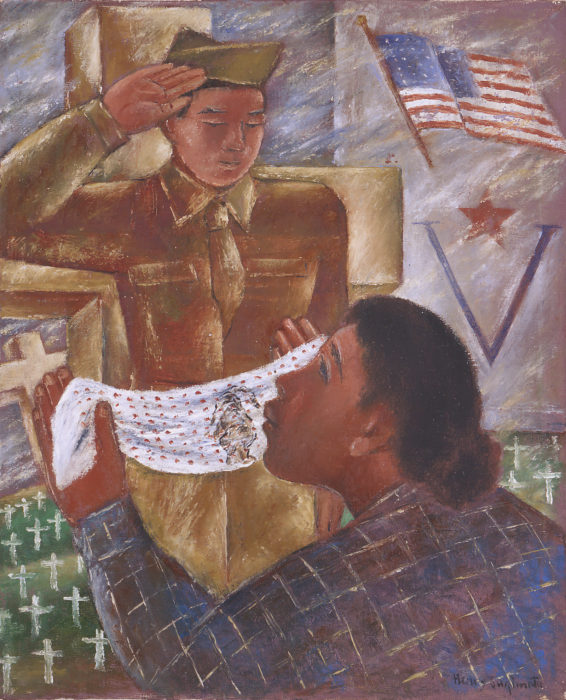
Henry Sugimoto, Untitled (In Camp Jerome), 1943, oil on canvas, Japanese American National Museum, Gift of Madeleine Sugimoto and Naomi Tagawa (92.97.9)
Click to open full-size image in new tab.This object is part of the story A Soldier's Treasure, which is about Identity.
This painting shows a senninbari as depicted by artist Henry Sugimoto.
- Who might the person holding the senninbari be?
- Who might the other individual in the image be?
- What symbols are evident in this image?
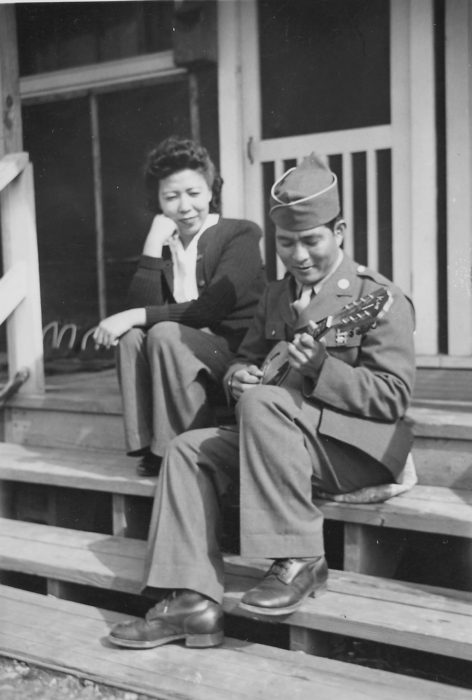
Japanese American National Museum, Gift of the Walter Muramoto Family (97.292.3P)
Click to open full-size image in new tab.This object is part of the story Snapshots, which is about Loyalty.
Walter Muramoto was an amateur photo enthusiast and unofficial camp photographer at the Rohwer War Relocation Center in Arkansas, where many people asked him to photograph events and groups in the camp.
Mr. Muramoto was incarcerated at Rohwer from September 30, 1942, to September 7, 1945. Born in California, he lived in Redondo Beach before World War II and resettled in Lodi, California, immediately after the war ended.
Look closely at this snapshot that Mr. Muramoto took in 1945.
- How would you describe the two people?
- About how old do you think they are?
- What are they wearing?
- Does the instrument he’s strumming provide any hints about the influences in their lives?
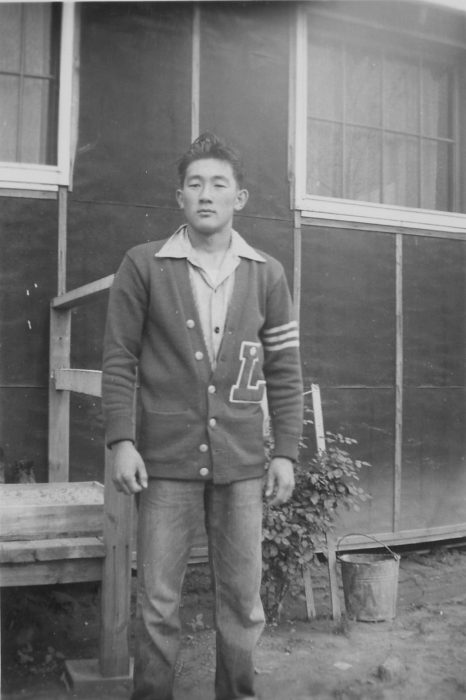
Japanese American National Museum, Gift of the Walter Muramoto Family (97.292.2Q)
Click to open full-size image in new tab.This object is part of the story Snapshots, which is about Loyalty.
This is another snapshot taken by Mr. Muramoto in the concentration camp in Rohwer, Arkansas, during World War II.
- What do you notice about the sweater this individual is wearing?
- Does this type of sweater communicate anything to you about him? If so, what does it tell you?
In 1942, approximately 14 percent of the 112,000 incarcerated people of Japanese descent were high school students.*
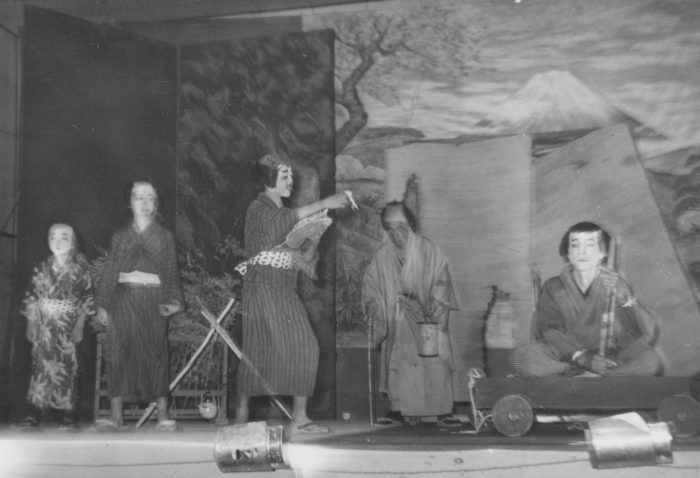
Japanese American National Museum, Gift of the Walter Muramoto Family (97.292.4AI)
Click to open full-size image in new tab.This object is part of the story Snapshots, which is about Loyalty.
Look closely at this picture.
- What do you think this is a picture of? Why do you think so?
- What do you notice happening in the foreground and the background?
- Does this snapshot make you curious about the relationship between culture, tradition, and community?
As seen in this snapshot, Japanese cultural traditions like Kabuki were performed in the camp. Sumo, baseball, Japanese flower arranging, Japanese dance, and Japanese calligraphy were also practiced in camp.
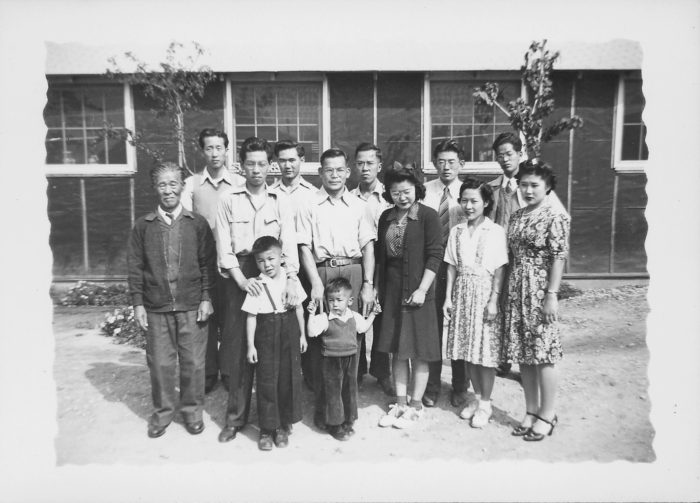
Japanese American National Museum, Gift of the Walter Muramoto Family (97.292.13M)
Click to open full-size image in new tab.This object is part of the story Snapshots, which is about Loyalty.
Look closely at this photograph.
- Who might be the oldest person in this picture?
- Who might be the youngest?
- How might they be related to each other?
- Where do you think the picture was taken? Why do you think so?
- Do you think family ties would have been strengthened or weakened by life at the camp?
This picture was taken in front of the barracks where families lived in Rohwer, Arkansas.
